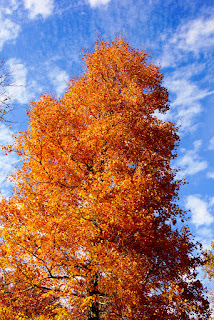 Light is the chisel, what you are photographing is the marble, composition is the artistic interpretation. The three distinct parts of the photographic puzzle. When blended together create what is known as Fine Art Photography.
Light is the chisel, what you are photographing is the marble, composition is the artistic interpretation. The three distinct parts of the photographic puzzle. When blended together create what is known as Fine Art Photography.What is important about visualizing photography from the perspective of these three elements is they can be applied to any photograph taken by any photographer. Sculpting with light can change the outcome of your final photograph by using light to enhance the characteristics of your subject.
Using Light as the Chisel: Light moves in a straight line, yet it can be bounced, diffused, softened, strengthened, dimmed, and brightened. All of these characteristics can be used to the photographers advantage. Because light moves in a straight line it inherently will create shadows and shadows are good for photographers for they bring definition to your subject, especially people.
 When it is bounced off a ceiling or a reflector surface, light will automatically spread out and soften those shadows. The source of light does make a difference. If it is natural, it's characteristics are as varied as the weather conditions. Clouds diffuse it, shade darkens it, used from behind it can highlight and from the front it can be harsh. It is therefore up to the photographer to determine how best to employ natural light.
When it is bounced off a ceiling or a reflector surface, light will automatically spread out and soften those shadows. The source of light does make a difference. If it is natural, it's characteristics are as varied as the weather conditions. Clouds diffuse it, shade darkens it, used from behind it can highlight and from the front it can be harsh. It is therefore up to the photographer to determine how best to employ natural light.Your Subject as the Marble: What you photograph is just as important as the chisel you decide to employ against it. Your subject determines what kind of chisel you will use. People can be used against a variety of light. Athletic bodies require shadows for definition, beautiful models need softer light to help define their unique look. Animals are difficult to light because they tend to move around, where nature is often finicky and uncooperative.
Compositional Interpretation: How you want your image to look requires you understand composition. A weak composition is like weak writing. The best written stories are the ones that stay on subject and use strong verbs and descriptive prose. Strong writing helps the reader to visualize the story and carries the story forward with each line. Weak writing bogs it down and the reader loses interest very quickly. The same applies to Compositional Interpretation.
Weak composition in a photograph becomes an ordinary image and the viewer never really connects with the story. Strong compositional elements carry the story forward and the viewer is drawn into the image. Composition relies on the other two parts for without them, the image looks flat and dysfunctional.
The Final Image: When all three of the Photographic Puzzle parts are used to sculpt an image, the photograph comes alive. The viewer instinctively recognizes how this happens without even knowing why...it just works. It is up to the photographer to recognize how to employ these ideas toward what he is photographing. When he/she does, your photographic images become much more than pictures, they become a visual book that is captured and told in a single moment of time.













